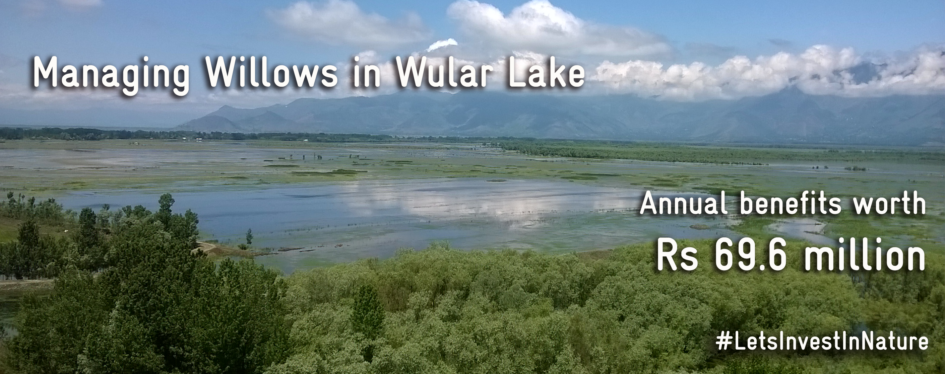Shubhangi Singh: The pristine valley of Kashmir in Northern India is a beautiful land of meadows, lakes and river that is, still, reeling from the aftermath of devastating floods that engulfed the region for two successive years. These floods damaged numerous houses, displaced several people and caused massive economic losses. A primary reason for this calamity to have repeatedly occurred, creating such major impact, is the scale of human intervention in the valley’s operations. Careful conservation and protection of the lakes, ponds and wetlands in the Kashmir Valley could have, perhaps, reduced the scale of the devastation to a large extent.
With the river Jhelum passing through it, Wular lake in the Kashmir Valley is India’s largest freshwater lake. The lake, along with it’s marshes, regulate the water levels and offer protection against flooding. Wular lake is integral to the hydrological system of the Kashmir valley. Over the years, drainage of associated marshes, agriculture, increased siltation and plantation of willow trees to supply wood to sports and timber industries have reduced the size of the lake to half size. This has severely impacted the lake’s capacity to manage floods, sustain livelihoods through fishes and vegetation and produce hydropower generation.
Although much of the lake has undergone alarmingly high level of degradation, destruction of Wular Lake can be reversed and it can, once again, act as protection against many flood related damages. Bringing Wular back to its original size and form requires removal of close to 5.6 lakh trees and tonnes of silt. The dilemma in this undertaking is that removing the willows will mean losing out on the trees’ ability to absorb carbon and the de-silting of lake would affect the vegetation and wildlife around it. Researchers conducted a study of the cost-benefit analysis and the results indicate a clear economic benefit in the favour of planned willow removal and dredging. Willows removed from the fringes of Wular would assist in restoring the hydrological functioning of the wetland complex and improve the lake’s capacity to mitigate flood-related damages. A revised plan by the State Government suggests that despite high costs of dredging and possible permanent loss of carbon dioxide sequestration from willow removal, restoring the lake is still worthwhile.
In the Valley, where there is much at stake, including livelihood security for the local people that earn from fisheries and aquatic plants found in the wetland complex, a healthy lake will further yield revenue that would benefit sustained conservation of the Wular Lake. There is huge benefits in restoring the balance back at Wular Wetland complex– for the lives, resources and livelihood for the people of Kashmir.

